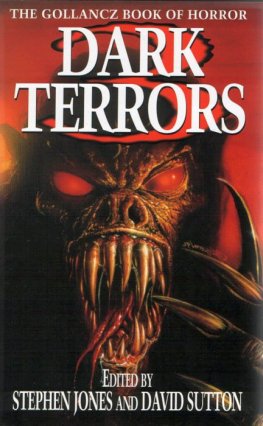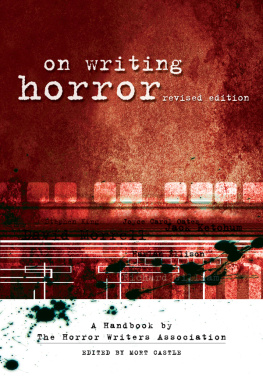The Mammoth Book of Best New Horror. Volume 10
INTRODUCTION: Horror in 1998
Following a two-year decline in North America,a near-record number of genre books appeared in 1998. The total for horror titles was up slightly on the previous year, with around a quarter of those books published in the young adult market and more than 15 per cent of them featuring vampires.
However, the overall number of genre books published in Britain fell to its lowest for nearly a decade. Horror titles were down around 46 per cent on the previous years figures, accounting for a mere 12 per cent of publishers genre output (which was still 2 per cent above the share of the American market).
A new study revealed that romance books continued to lead all other genres in terms of book sales in America. The industry was worth more than $1 billion annually and accounted for nearly half of all mass-market paperbacks sold. Sales of romance titles nearly equalled the sales of all the other genres combined, including horror, science fiction, fantasy, mystery, thrillers and westerns.
German-owned international media company Bertelsmann AG, already owner of Bantam Doubleday Dell, purchased Random House in May for an estimated $1.3 billion. This resulted in a merger of the two publishers under the Random House name.
With a base of thirty-five million book and music club members worldwide, Bertelsmann announced an agreement with bookselling giant Barnes & Noble, Inc. to establish a joint venture with its Internet subsidiary, barnesandnoble.com. Under the agreement, Bertelsmann reportedly paid $200 million for a 50 per cent stake in the on-line service and each party also contributed $100 million capital. Launched in May 1997, barnesandnoble.com became one of the twenty-five fastest-growing Web sites in the world, generating sales of $22 million for the six months ending 1 August 1998.
Meanwhile, in November Bertelsmann separately launched its own BooksOnline service in several European countries. The service used its new collaboration with barnesandnoble.com to offer customers worldwide the experience of shopping on-line for books in multiple languages.
In another major deal, Barnes & Noble acquired distribution giant Ingram Book Group for $200 million in cash and $400 million in stock, much to the consternation of many in the publishing and bookselling world. The purchase put Barnes & Noble in control of the primary distributor for its main on-line competitor, Amazon.com, and for most of the small chains and independent bookstores throughout the United States. The American Booksellers Association issued an official statement in which it considered the purchase to be a devastating development that threatens the viability of competition in the book industry, and limits the diversity and availability of books to consumers.
In a separate case, the ABA and a number of independent booksellers filed an anti-trust lawsuit in March in the US District Court for Northern California, accusing Barnes & Noble and Borders bookstore chains of violating anti-trust laws by using their estimated combined annual buying power of $5 billion to receive secret preferential treatment from publishers. B&N chairman Len Riggio hit back with an open letter to the media denying the ABAs assertion that book superstores were responsible for the decline in independents and stated that there was no evidence of wrongdoing on the part of Barnes & Noble.
Americas Crown Books filed for Chapter 11 bankruptcy in July after the new owner failed to find a buyer. This resulted in the closure of 79 of the chains 174 stores. Having already returned many books to publishers earlier in the year, Crown was subsequently sued by its principal supplier, Ingram, who claimed payment for $10 million in books. Ingram eventually agreed to accept more returns and extend new credit to the chain in exchange for super-priority status as an unsecured creditor.
A 300 million agreement between Waterstones and Dillons bookshop chains became the biggest-ever deal in British book retailing, with the result that most of the Dillons branches were re-branded to Waterstones. The move put the combined 200-plus stores in a good position to gain further market share before potential rivals Borders could make substantial inroads into the UK market.
In 1997 the publishing industry was watching HarperCollins closely, amid the turmoil of restructuring, the cancellation of numerous titles, and rumours of bankruptcy. A year later the company reported that it had increased its operating profits by 200 per cent. While revenues stayed even at $737 million, profits increased from $12 million to $37 million. According to the annual report from parent company News Corp., the results were due to a more focused publishing programme, decreased returns and some significant bestsellers. Fourth-quarter results for HarperCollins showed a $11 million operating profit, compared to only $1 million in 1997. Headed by publishing director John Silbersack, the HarperEntertainment imprint was launched in the autumn to cover all the media tie-ins being put out by HarperCollins.
Americas Leisure Books launched the Leisure Horror Book Club with two September titles, Alone With the Dead by Robert J. Randisi and The Halloween Man by Douglas Clegg.
French publisher Hachette Livre bought a 70 per cent equity stake in Britains Orion Publishing Group and Macmillan (owned by German publisher Holtzbrinck) made a hostile 7.3 million takeover bid for Cassell (which included the Gollancz and Vista imprints). The Cassell Board of Directors had rejected the offer of 1 per share (a 122 per cent premium over the public valuation of 45 pence) when, in an unexpected move, Orion outbid Macmillan with 1.23 per share and bought the company.
Canadian publisher Commonwealth, who had entered into joint contracts (aka vanity publishing) with an estimated 2,000 authors and had an annual budget of $6 million, declared bankruptcy in March. With lawsuits threatened by disgruntled writers and employees, publisher Don Phelan went into hiding, only to resurface briefly to blame an internal and external conspiracy for his problems, saying he would represent himself in class action suits brought against the firm by its clients.
Despite an announcement in May that Stanislaus Tals TAL Literary Agency had been sold to a company called Extreme Entertainment, it later emerged that Tal represented few if any authors and some royalties paid to the agency had never been reported.
The American Congress passed the Copyright Term Extension Act, adding a further twenty years to copyrights for individuals, bringing the length of copyright in the US up to life plus seventy years, and into line with the European copyright law which was amended in 1995. After vigorous lobbying by the Walt Disney Company (who was faced with losing its exclusive copyright to Mickey Mouse in 2003), another twenty years was added to the already existing seventy-five years of corporate copyrights. The Digital Millennium Copyright Act also gave full protection to work appearing on-line.
* * *
It was the summer of Stephen King. After his move in 1997 to Simon & Schuster for a $2 million advance and nearly 50 per cent of the profits, his big release for the year was the novel Bag of Bones. It was about bestselling author Mike Noonan, suffering from writers block following the unexpected death of his wife and their unborn child, who found himself caught up in a supernatural mystery centred around Dark Score Lake and a town in the grip of a tyrannical millionaire. In America the book had a first printing of 1,360,000 copies from Scribner, backed by a $1 million promotional budget.
Despite his phenomenal popularity on both sides of the Atlantic, the author had not appeared at a public event in Britain for nearly fifteen years. To coincide with the publication of the new book, King visited London in mid-August for a rare promotional tour. Bottles of a special King Lager were available during the UK launch party, produced especially for the event by a London micro-brewery, and a commemorative signed edition of













